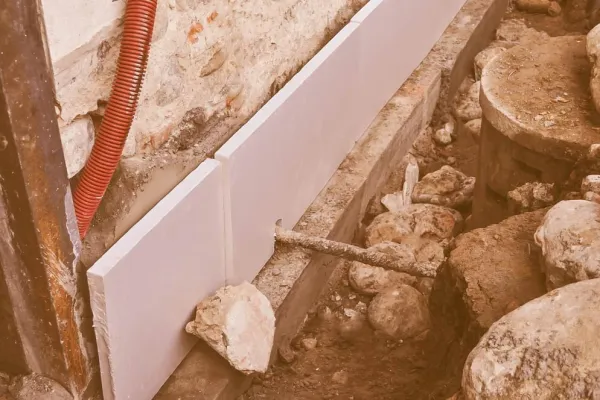Approximately 27 million people across the UK own properties. And many more want to own them.
But in recent years, the country’s housing market has experienced some difficult times.
Property sales increased throughout 2020 and 2021. But some economists argue that house prices have ‘corrected ‘since then.
So, many are now asking: will the UK property market crash? Read our blog below to find out the latest insights.
What is the UK property market currently like?
Property prices
Recent figures from Nationwide found that UK house prices have fallen by 1.1% over a recent 12-month period.
Yet this trend seems to be correcting in recent months.
Zoopla says it expects prices to end the year 2.5% higher than 2023.
Interest rates
Interest rates have fallen in the second half of 2024.
The Bank of England reduced the rate to 5% after holding it at 5.25% for its previous seven consecutive meetings.
This means that mortgages are becoming more affordable.
Number of house sales
The number of house sales in the UK provides insight into market conditions, too.
Recent data from HMRC says that roughly 90,630 house transactions were completed in July.
This is up 7% on 2023’s figure. Yet this doesn’t mean that the properties are selling for a higher amount.
Average house sale process times
At the time of writing, Zoopla estimates that the average home for sale goes under offer in 32 days.
From start to finish though, it takes roughly 25 weeks for a sale to be completed.
Zoopla says that one in five homes on the market have had their asking price cut by 5% or more.
Some figures suggest that the time taken to find a buyer is currently higher than it has been for a long time.
Rightmove has reportedly found that the time it takes to find a buyer is currently the highest since 2019.
Average house prices
Average house prices across the UK are another significant indicator of market conditions. They can vary depending on the location and by property type.
Based on average UK figures, a typical property in the UK costs the following:
- Detached: £439,974
- Semi-detached: £280,895
- Terraced: £239,000
- Flat: £232,436.
Location impacts price
The above averages are helpful – to a point. However, local property averages across the UK are essential to consider, too, as they can vary a lot.
For example, below are the approximate averages for different areas:
- London: £698,000
- Bournemouth: £420,000
- Wrexham: £186,581
- Ayr: £191,365.
These figures are different for the UK rental market. We have outlined these further on in this blog.
Is the UK property market going to crash?
Most property experts think that the UK market is not going to crash.
However, not all experts agree on what will happen to the market.
Rightmove
For example, Rightmove predicts a 1% fall in house prices by the end of 2024.
Savills
Savills expects a 2.5% rise in house prices in 2024.
(This is an amendment to a previous prediction, which suggested that numbers would fall).
Their prediction indicates that even some of the industry’s experts have been surprised by the market’s resilience.
Zoopla
Zoopla anticipates a 1.5% rise in house prices in 2024.
Knight Frank
Knight Frank predicts a 3% rise in house prices in 2024.
MoneyWeek
MoneyWeek has joined this group of optimists. They expect growth in the housing market in 2024, helped by falling swap rates.
What is the rental market like in the UK?
Although average property prices are a good indicator of the UK housing market, it’s not the only way of judging things.
Millions of people across the country are tenants living in a rental property. These prices are equally important.
Average UK rental prices
According to the latest figures, the average UK rental prices are as follows:
- Detached: £1,461 per month
- Flats and maisonettes: £1,228 per month
- Four or more bedroom properties: £1,932 per month
- One-bedroom properties: £1,009 per month.
Differences between locations
Like house prices, rental prices also vary by region.
England
The average monthly rent for two-bedroom properties varies in different parts of England. For example:
- Northumberland: £528 per month
- North Norfolk: £711 per month
- Harrow: £1,536 per month.
Scotland
In Scotland, the average monthly rent for two-bedroom properties varies, too. For example:
- Argyll and Bute: £724
- Greater Glasgow: £1,011
- Lothian: £1,247.
Wales
Wales also has variation by area for monthly rent on two-bedroom properties:
- Powys: £514
- Conwy: £652
- Vale of Glamorgan: £784.
What changes is the UK Government making to the property market?
The United Kingdom voted in a new Labour government in July 2024.
The Labour government have proposed several ways to transform the UK property market.
Many of these ideas are in the early stages as the government has still only relatively recently got into power.
The government is expected to continue the Conservatives’ policy of reforming leasehold laws.
Leaseholders are expected to get more power over lease extensions. This should include reduced costs (or even zero costs, depending on the law) for extending a lease.
Rumours have circulated for a long time about the scrapping of the ‘Right to Buy’ initiative.
Taxes are expected to increase too, although it’s not yet clear which direction Stamp Duty will move in.
Another common opinion is that new initiatives will support first-time buyers.
More incentives may be brought in for people to make their homes greener as well.
Property policies and markets change fast
It’s important to stay up-to-date with ongoing developments related to the property market.
Opinions and laws are subject to change all the time. Some of this guidance may no longer be accurate even at the time you read it.
















